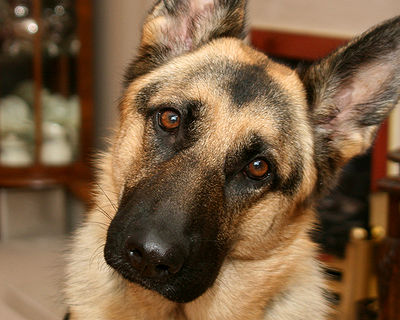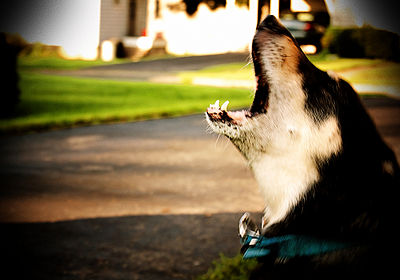A dog’s nose has incredible powers. Every part of the nose functions to give a dog an amazing sense of smell, even those slits.
A dog’s sense of smell is anywhere from 10,000 to 100,000 times better than ours. They can differentiate between 30,000 to 100,000 scents individually.
Former director of the Florida State University Sensory Research Institute made the analogy that if humans can see one-third of a mile distance, dogs could see clearly more than 3,000 miles.
When a dog inhales, 12% of air goes to the back of the nose for analysis. The rest passes through and goes to the lungs. There are bony, ruffled structures at the back of the nose called turbinates. Tissues in the turbinates separate each odor into its own chemical makeup. Olfactory receptors in the turbinates recognize the odor by its shape and send the information to the brain to process.
Another structure at the bottom of a dog’s nose (other mammals as well) is called Jacobson’s organ. It detects pheromone odors and sends them to the part of the brain that analyzes them. The dog can then taste and smell the scent. When you dog sniffs with his mouth pulled back in what looks like a grin, it’s known as the Flehman Reaction. Your dog is smelling a female in heat or the urine of another dog.
The slits on both sides of the nose allow a continual stream of air. As the dog exhales, the air motion lets new scents into the nose.
The nose slits also give the dog the ability to twitch each nostril separately so that s/he knows which side the smell has entered. Following a trail, a dog will weave back and forth so that s/he can determine exactly where the smell is coming from. The slits give the dog enhanced sniffing ability to distinguish different odors and follow the scent of prey, find lost humans and those buried in snow or debris and more.
Bloodhounds and Basset Hounds have especially excellent scenting abilities. Their long ears and loose chin skin help by sweeping up scents from the ground.
Watch your dog’s nose twitching and you’ll see lots of information being absorbed and analyzed about the environment.



